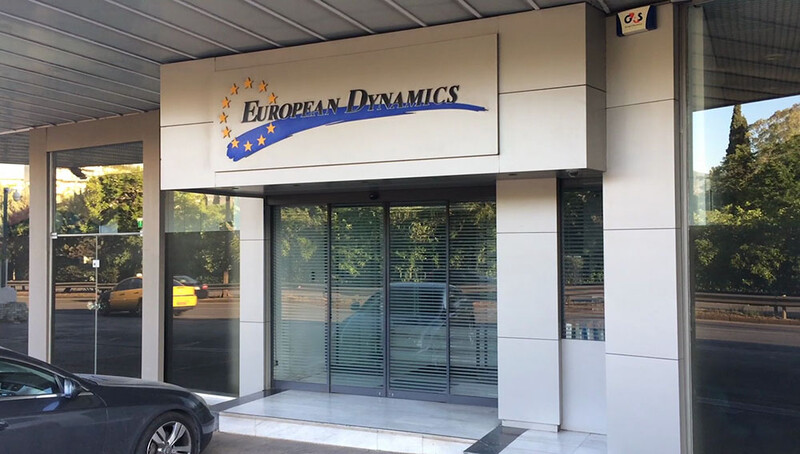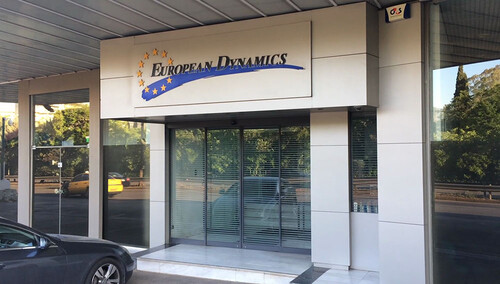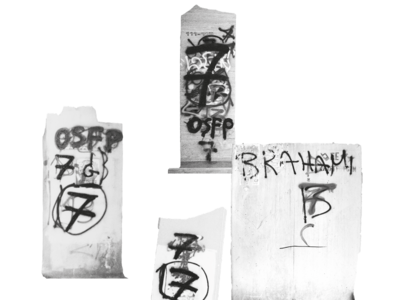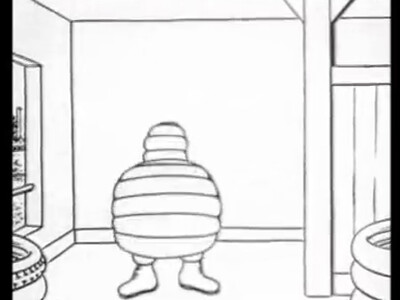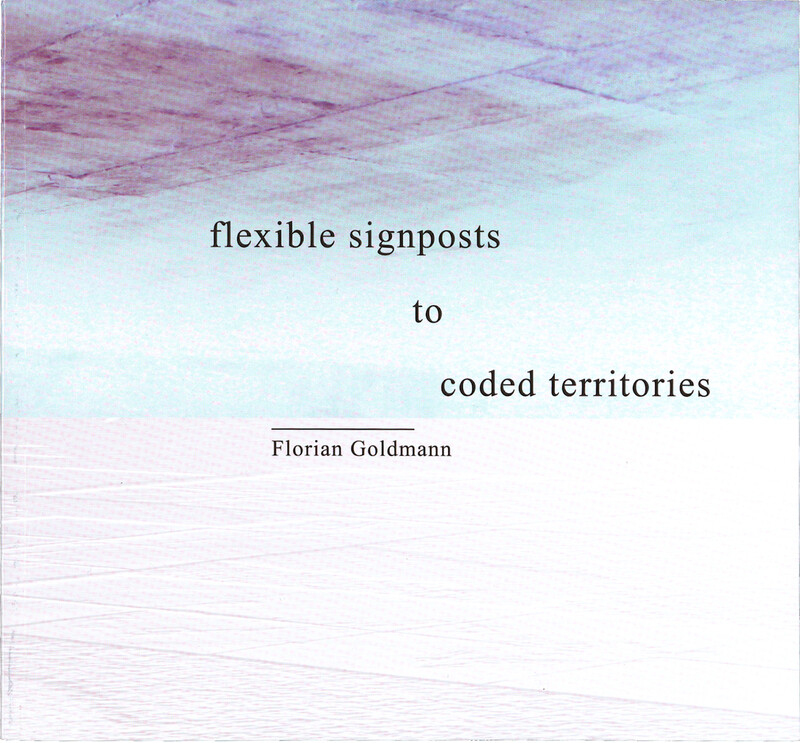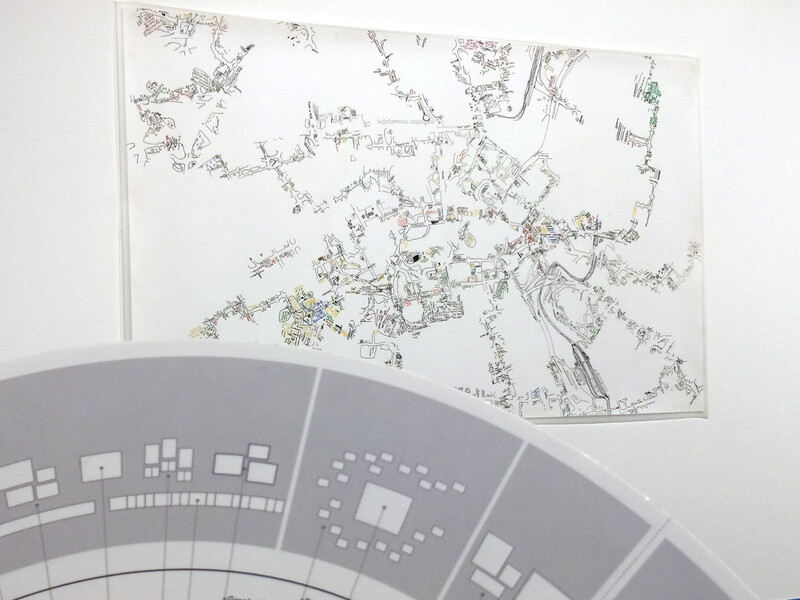
Flexible Signposts to Coded Territories focuses on the graffiti encountered everywhere throughout the city of Athens. The project sets out to show how they manifest the logic of the daily struggle for territorial appropriation between urban groups by hinting at the presence of a spatial order that circumvents the city’s administrative and social boundaries and rules. Florian Goldmann surveyed the city using maps and photographs, revealing what he terms “coded territories,” namely areas displaying a coherent textual narrative constructed by statements, rebuttals, and simple markings, for instance by soccer fans. Photographs frame the graffiti in their context, thus providing the evidence with which to classify them based on the support involved–a wall, window, or any other surface visible to pedestrians–and on their spatial position, either at the center of a marked area or at its outer boundaries. White lines occasionally appear, serving as visual aids to deciphering these chaotic urban surfaces by means of a reading order. In addition to these images, the book arranges Goldmann’s hand-drawn field notes in one hundred quadrants of a continuous city map. Grey strokes indicate roads, rail-tracks, and toponyms, while colored strokes transcribe the graffiti and the numerous crossing-outs that manifest the ongoing disputes. These colored strokes are indicatively positioned in the same place as where the graffiti were found, producing a singular set of maps. If graffiti allow textual communication to be experienced as a physical space, Goldmann’s maps attempt to transcribe this urban experience into a single sheet of paper. The survey aims to demonstrate that graffiti are not empty utterances or gratuitous acts of vandalism, but that on the contrary they have a constructive role in reassembling the city through a visual system of textual markings, providing passersby with an ephemeral and yet coherent structure of coordinates and references.Kalpakci, Andreas: Flexible Signposts to Coded Territories, in: Kaijima, Momoyo, Laurent Stalder, and Yū Iseki: Architectural Ethnography, Tōkyō: Toto publishing, 2018, p. 120f.
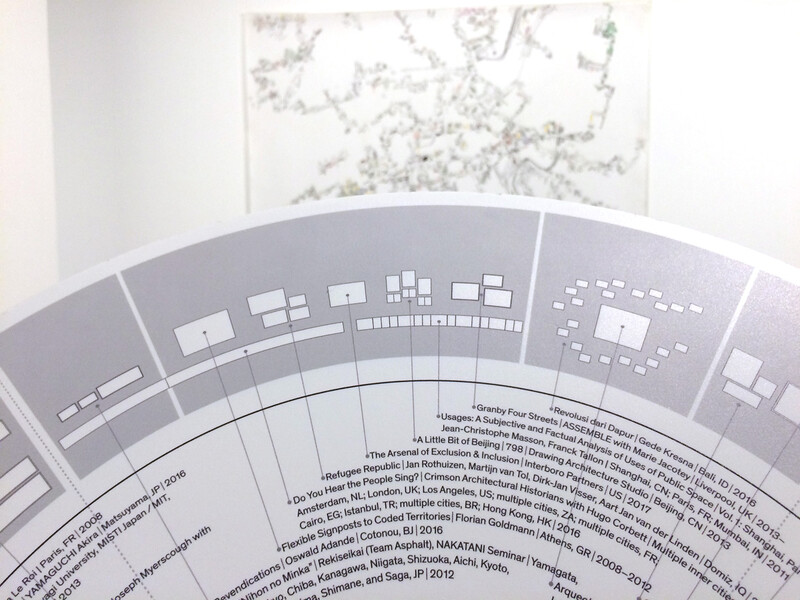
この作品は、アテネの街の至るところで見かけるグラフィティに着目 した研究書であり、衝の行政や社会の境界・規則を巧みにすり抜け る空間的秩序の存在を暗示することで、都市の集団聞で日常的に 繰り返される縄張り争いのロジックがどのように表明されているか を示そうと試みたものだ。Florian Goldmann は、地図と写真を用いてこの街を調査し、彼 が「コード化された縄張り」と呼ぶ領域、たとえばサッカーファンによ る声明、反論、単なるマーキングからなる一貫した物語が示す領域を明らかにしている。本のなかでは、各グラフィティが描かれた文脈 を写真とともに確認することで、そのキャンバスとなるもの、つまり 壁、窓、あるいはそのほかの歩行者から見える面、またそれらの空 間的な位置、すなわちマーキングされる領域の中央にあるか、ある いは外周にあるか、ということに基づいてグラフィティを分類してい る。時折写真の上に白線が引かれ、混沌としたグラフィティの壁画 を解説する一助となっている。これらの写真と併せて、本書では、 100 区画に分かれたGoldmannによる手描きのメモとしての地図ドローイングも掲載されている(次頁に掲載されているのはそれらをつな ぎ合わせた大きな地図である) 。グレーの線は道路、線路、地名を示し、 カラフルな線でグラフィティが表されていて、その上に引かれた無 数の取り消し線は、壁画上で目下進行中の「論争」を示している。 カラーの線はグラフィティの描かれた場所を示すように配置されて おり、ひとまとまりの地図をつくりだしている。グラフィティが物理的 空間における文字コミュニケーションの経験だとすれば、 Goldmannの地図は、この都市の経験を一枚の紙に書き移そうと試みたものなのである。グラフィティは無意味な叫びでも根拠のない破壊行為でもなく、む しろ道行く人たちに、一時的なしかし一貫性のある座標と道標のよ うな体系を示し、文字によるマーキングの視覚的システムを通して 都市を再構成する建設的な役割を果たす、ということをこのリサー チは物語っているKalpakci, Andreas: 奔放な標識、コード化された縄張り、貝島桃代,ロラン・シュトルダー,井関 悠: 建築の民族誌, TOTO出版, 東京 2018, 118ページ以降を見よ。
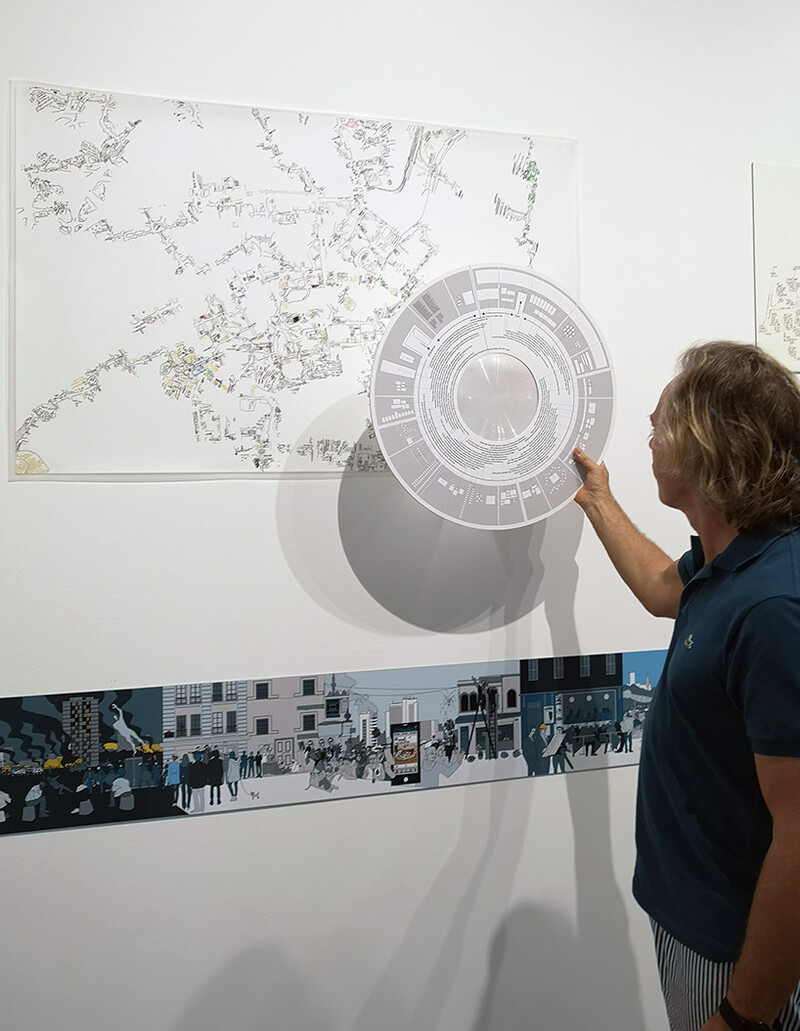

Flexible Signposts to Coded Territories suggests to understand graffiti as a text that is inherent and symbiotic to the city; a text that is constantly shifting as it is formed and altered by its many authors and censors. To deduce this text, it is necessary to physically enter and traverse it. The map-drawing, that spreads throughout the book, can therefore only suggest access points, as it consolidates the written at a certain point in time.
In Feasible Slideshows to Coated Terribilities, the text frozen in the map is traversed once more, assuming to find its graffiti inscriptions to be reflecting a decade of debt crisis and imposed austerity measures. Taken aback by a discreet footnote, however, we end up roaming along a different, yet incomprehensible semantic trail.
